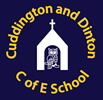Phonics at Cuddington and Dinton
Intent
At Cuddington and Dinton C of E School, we use the Bug Club Phonics programme to deliver a complete systematic synthetic approach to our phonics teaching. In phonics, our provision is designed to ensure that all our children will learn to read and spell well from very early on. Phonics is the root for reading and spelling that helps our children grow into confident readers and writers, with reading for pleasure at the very heart of our reading curriculum. We believe that all children should progress through the Bug Club Phonics phases with fluency and confidence and thus place high importance on high quality teaching and resources, with assessment and intervention in place to support our pupils.
We offer a structure and sequence of lessons to help teachers ensure they have covered the knowledge required to meet the aims of the Bug Club Phonics programme. These lessons are supported by high-quality resources.
For us to deliver a high-quality systematic synthetic phonics programme, we ensure:
· Correct pronunciation by children and adults
· A clear understanding of age-related expectations
· Systematically working through the Bug Club Phases 1-6
· A multi-sensory approach (Visual Oral Kinaesthetic)
· Phonetically decodable books
· Games and activities using a range of materials
· Fully interactive sessions
· Children are taught to pronounce phonemes in isolation, which are then blended, from left to right, all through the word
· Children are taught to segment to spell
· Children use phonics and word-building to learn to read and spell
· Children learn high frequency ‘tricky’ words in sequence
· Practise and apply: reading words individually and in sentences and texts
· Practise and apply: spelling words individually and in sentences
Implementation
When designing our curriculum, we have sought to focus on a clear progression through the Bug Club Phonics phases.
Reception: During the first few weeks our children will focus on using listening activities, stories, rhymes and song. After this time, during the Autumn term, our children will focus on Bug Club Phase 2. They will then progress onto Bug Club Phase 3 in the Spring and Summer and finish their year with Bug Club Phase 4. Our children will learn the sounds, in order, and will recognise their position in words. Our children will learn how to segment and blend for their reading and spelling and they will be taught how to read and spell irregular ‘tricky’ words, with the ‘tricky’ part being explained. Throughout this process we assess our children regularly to ensure they are secure in their knowledge, and we support them through targeted interventions if consolidation is needed. These are provided as additional sessions on top of the whole class phonics lesson. A phonics reading book will be brought home each week. This will be linked to the phonics knowledge the children have gained in school so they can apply their understanding to the text.
Year 1: When our children enter year 1, we assess their knowledge gained during reception using the Bug Club assessments. These assessments highlight any areas in need of consolidation to inform the starting point of whole class teaching and interventions. Our year 1 children will continue with Bug Club Phase 4 at the start of the Autumn term and progress onto Bug Club Phase 5 afterwards. Our year 1 children will build upon the knowledge they gained in reception to be able to apply their understanding of phonemes to alternative graphemes. They will embed their knowledge of segmenting and blending to read and spell and they will be taught how to read and spell irregular ‘tricky’ words, with the ‘tricky’ part being explained. Throughout this process we assess the children regularly to ensure they are secure in their knowledge, and we support our children through targeted interventions if they need consolidation. These are provided as additional sessions on top of the whole class phonics lesson. A phonics reading book will be brought home each week. This will be linked to the phonics knowledge the children have gained in school so they can apply their understanding to the text. At the end of year 1, all our pupils will take the statutory phonics screening check.
Year 2: When our children enter year 2, we continue with our assessment procedure. We will use the Bug Club assessments and the data from their year 1 phonics screening check to inform the starting point of whole class teaching and interventions. For our pupils who do not achieve the expected standard in year 1, they will receive additional support and will retake the phonics screening check in year 2. During year 2, our children will embed their knowledge of learnt graphemes and learn new spelling rules through Bug Club Phase 6. Within this phase, there is a focus on adding suffixes and prefixes to words and our children will know how to use syllables to help them read and spell. They will be taught how to read and spell irregular ‘tricky’ words, with the ‘tricky’ part being explained. Throughout this process we assess the children regularly to ensure they are secure in their knowledge, and we support our children through targeted interventions if they need consolidation. These are provided as additional sessions on top of the whole class phonics lesson. A phonics reading book will be brought home each week. This will be linked to the phonics knowledge the children have gained in school so they can apply their understanding to the text.
Interventions: In all year groups, children reading and spelling below age-related expectations receive targeted support. Additional phonics teaching is given following the sequence of lessons in the Bug Club Phonics programme and supported by phonetically decodable reading books.
In KS2, Bug Club Phonics is continued across year groups as an intervention programme, and it is used to support those children who are reading below age-related expectations. The children are assessed using the Bug Club assessments and have targeted teaching to address gaps and misconceptions. Access to the Bug Club Phonics books and the online system, support the children’s development in their reading.
Impact
We believe that the impact of using a complete systematic synthetic approach to our phonics teaching will ensure that our children have good phonological knowledge, which they will apply to their reading and writing. Our children will feel confident in reading and spelling and use their knowledge to identify rules and patterns within phonics.
Staff have high expectations and work closely to develop a firm basis for reading and spelling development. CPD provides opportunities to understand the continuity and progression of skills across key stages and phases; skills to model, scaffold and question pupils in order to achieve a deeper level of understanding and vocabulary. Phonics delivery and impact is monitored and assessed regularly by members of the leadership team ensuring a consistent approach.
Phonics and reading are essential tools to access the whole curriculum, to engage and make sense of knowledge and to explore, question and respond to the world. A strong phonics basis enables us to ensure our children flourish as readers and writers; developing socially, emotionally, intellectually and culturally.

